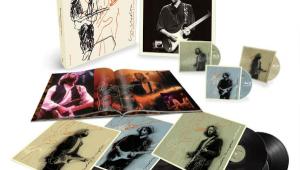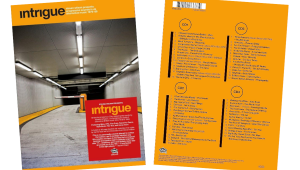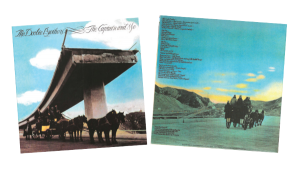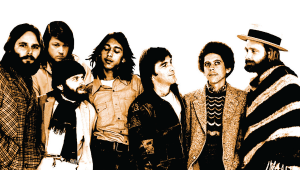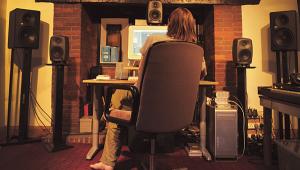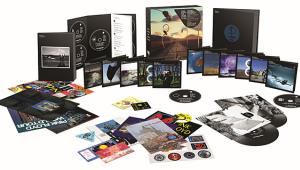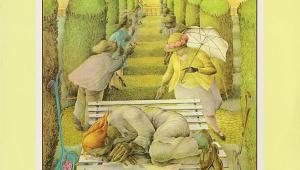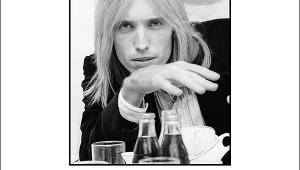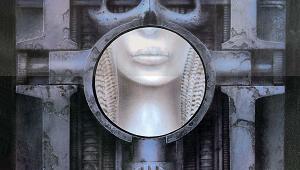Interesting interview! Thanks!
The S+V Interview: Talking Tech and More with Singer Julie Feeney Page 2
In her life and career, Feeney seems to have heard nearly everything else under the sun, absorbed it into her musical memory, and used it to her mellifluous advantage. Her first album could also be called 13 Art Songs, from the a cappella “Alien” to the chamber-like, beautifully arranged “Wind Out of My Sails,” which, though sad, sounds almost like a children’s song. With Feeney playing 11 instruments, the album is as striking a debut as Kate Bush’s The Kick Inside or Sinéad O’Connor’s The Lion and the Cobra, and it won Ireland’s Choice Music Prize for Album of the Year.
No sophomore slump for Pages, which is even more remarkable (and which, like 13 Songs, was released on Feeney’s own label, Mittens). Having penned words that began as “thought streams” before being expanded into essays and then distilled back down to poems and finally lyrics, Feeney composed, scored, and conducted the songs for a full orchestra. Those accompaniments were recorded in a single day; Feeney later added her vocals in her own home studio. The result is a collection that makes room for plenty of artistry, including gradually morphing meditations (“Grace,” “Stay”), vocal performances that take delight in percolating rhythms (“Myth”) or enchanting turns of melody (“Mr. Roving Eye Guy”), and orchestrations that include “Penny Lane”-style horns (“One More Tune”) as well as a Philip Glass-like circular string figure (“Monster”). The album also features the lighthearted “Impossibly Beautiful,” which gave rise to an award-winning parade-of-headdresses video that can be viewed at juliefeeney.com.
Feeney has been keeping details of her upcoming projects close to her chest — both the opera (commissioned by four arts festivals in Ireland) and the new album (financed by fans via the site fundit.ie). Which means that selections from 13 Songs and Pages are likely to dominate the set lists for her run at the Irish Arts Center. However, the performances will differ from previous Stateside appearances in that she’ll be backed by a small orchestra in a staged show, co-directed by Vallejo Gantner of New York City’s Performance Space 122.
To look at Feeney is to see a face as fresh as anyone on the charts these days. But to peruse her other activities and scholarship is to recognize a person with a deep understanding of the history of music and sound.
Check out, for example, her playlists for Kaleidoscope, a five-part series she did for RTÉ Radio 1 in Ireland (rte.ie/radio1/kaleidoscope). Benjamin Britten, Fleet Foxes, John Adams, Bon Iver, Igor Stravinsky, Tír na nÓg: They’re all there, and much more.
“I had presented an arts program on an all-Irish-language community station,” Feeney recalls, “but Kaleidoscope was the first time I was asked to do whatever I wanted. This was RTÉ, a proper international station; I couldn’t believe it. I had a most wonderful producer there, Aidan Butler, and the first night he said, ‘Would you like to use the desk?’ I said, ‘Do you mind if I do?’ And he said, ‘That’s why I asked you!’ Musicians are often intuitive in using the desk. So I actually used it myself; it was just Aidan and me. I spent about three days on each episode, which is probably way too long, but I brought a lot of music — loads of music.”
- Log in or register to post comments


It's worth noting the contrast with the United States, where mandatory music education is on the decline. This difference in approach highlights the diverse perspectives on the role of music education in a student's development and the challenges countries face in ensuring its effectiveness.If you're looking to delve deeper into this topic, you might consider purchasing a dissertation abstract at https://essaysprofessor.com/buy-an-abstract-for-dissertation-online.html that explores the intricacies of music education in various regions, shedding light on the evolving landscape and its impact on students.
